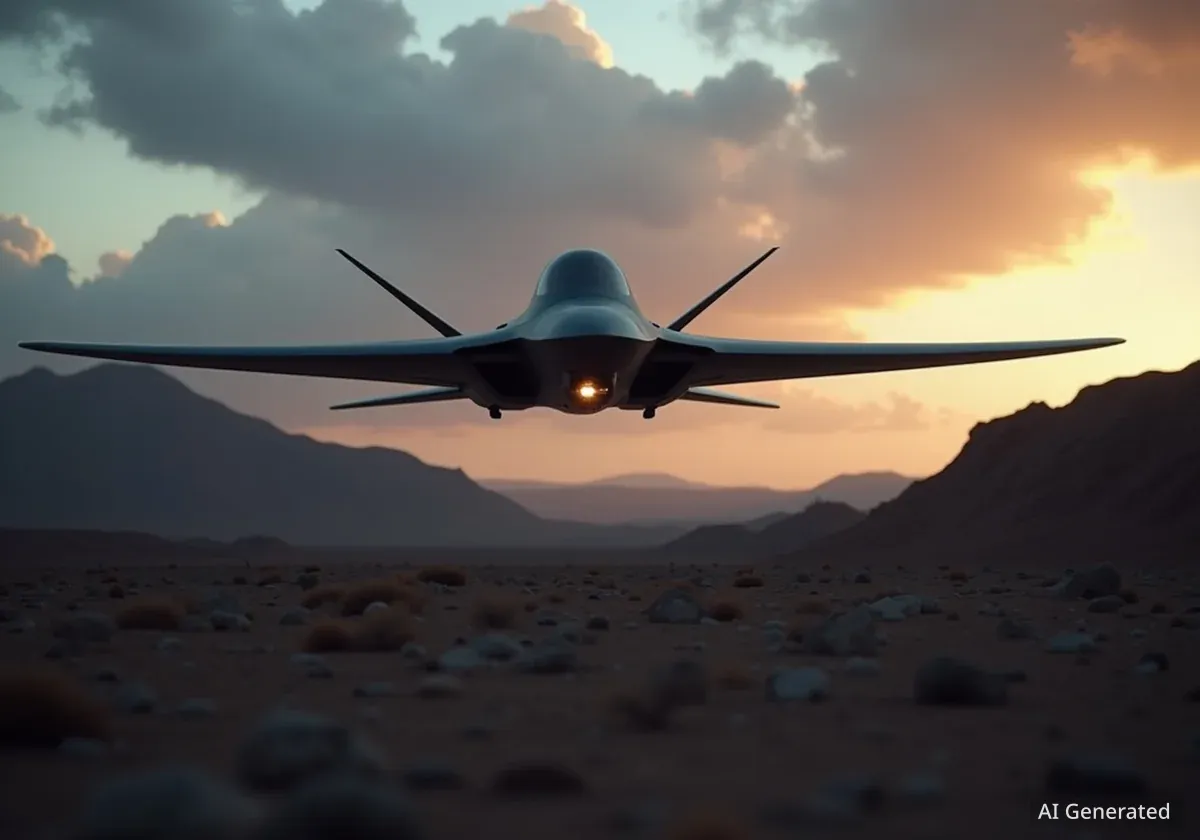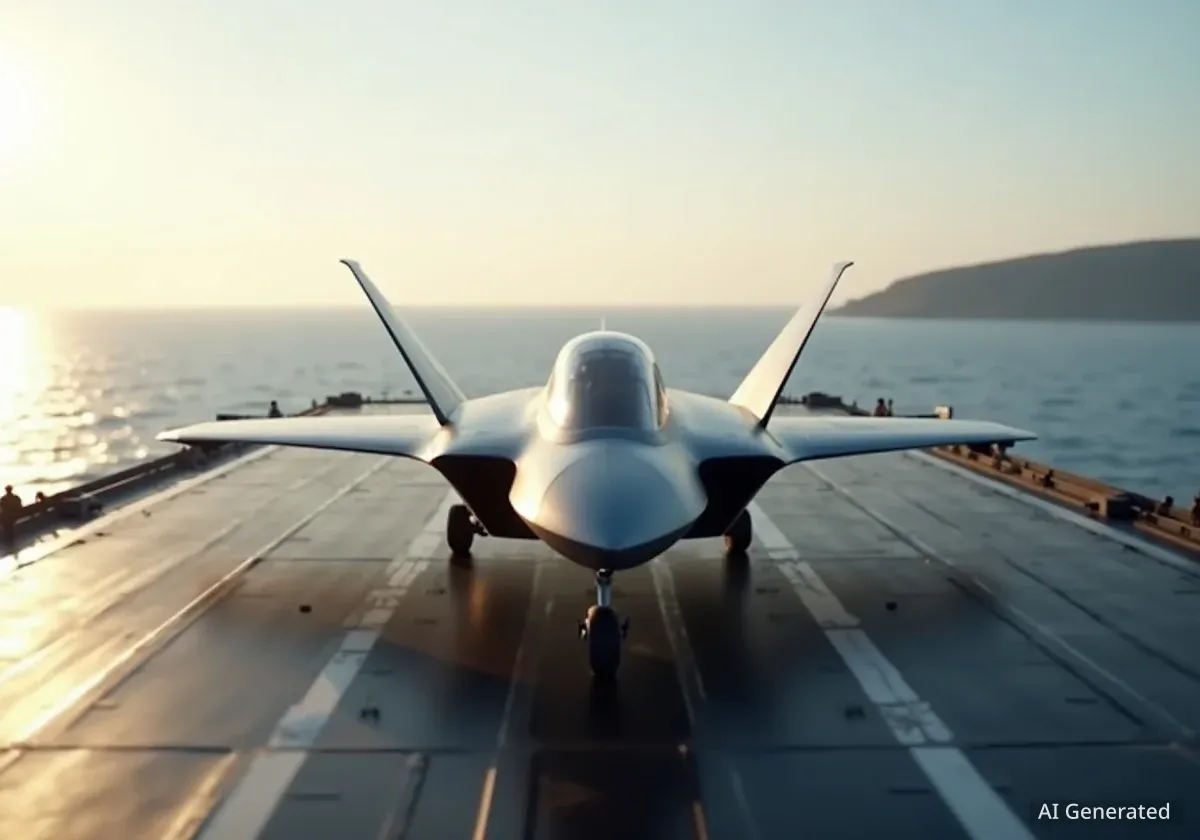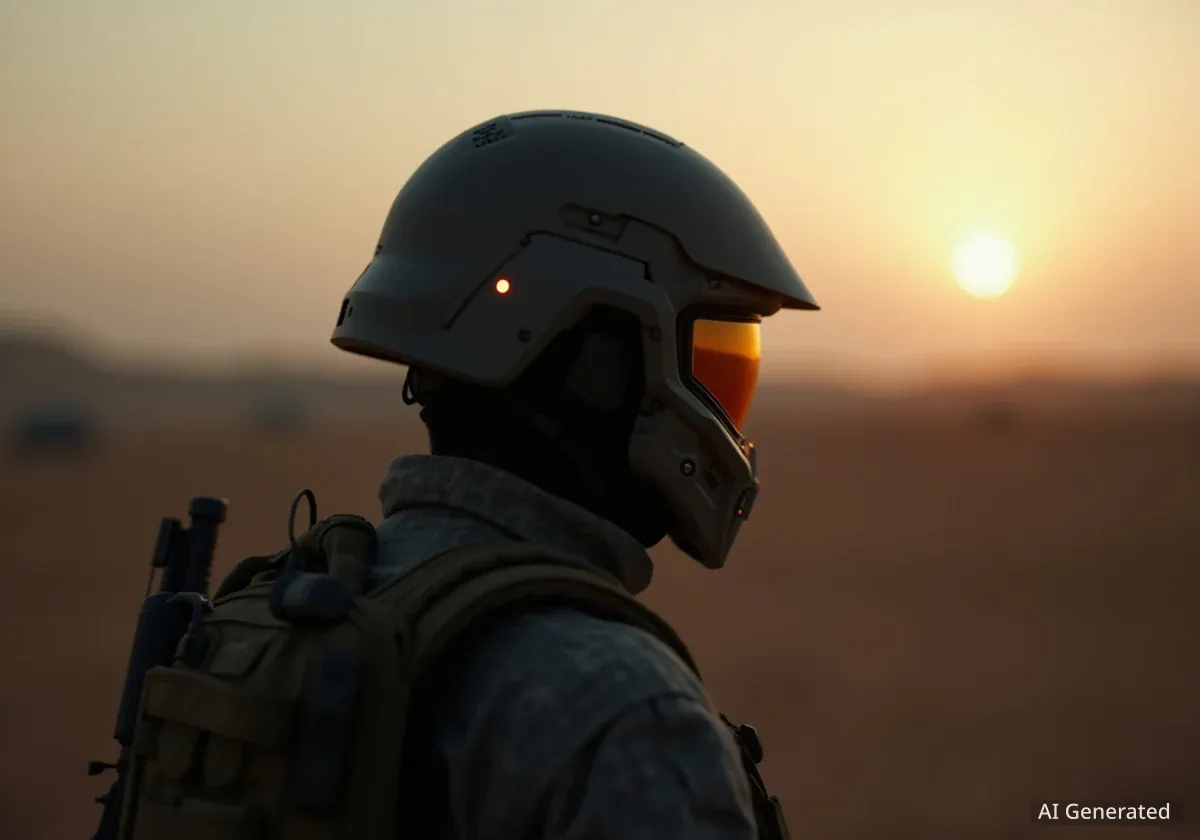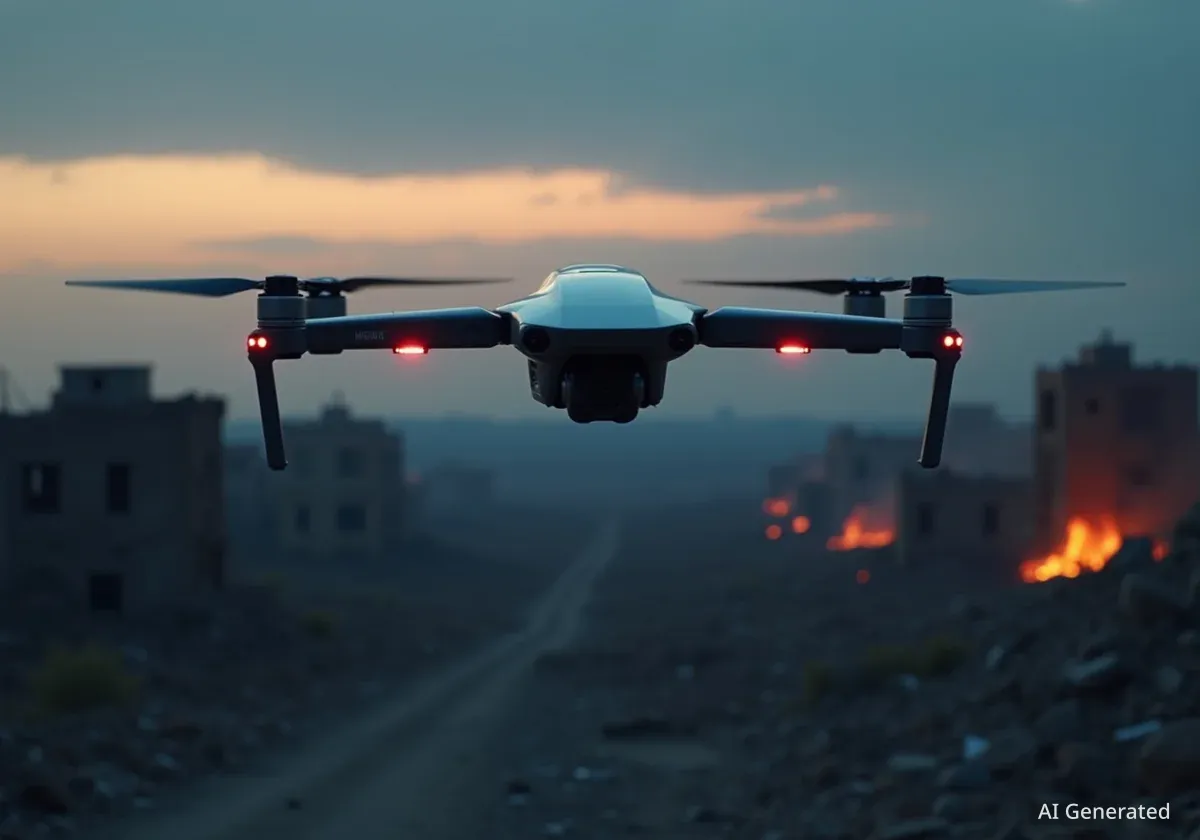American defense technology firm Shield AI has introduced a new class of military aircraft, the X-BAT, which it describes as the world's first fully autonomous, vertical take-off and landing (VTOL) fighter jet. This aircraft is engineered to conduct complex combat missions without a human pilot and without the need for traditional runways, potentially changing the landscape of modern airpower.
Key Takeaways
- Shield AI has unveiled the X-BAT, a fully autonomous fighter jet capable of vertical take-off and landing (VTOL).
- The aircraft is powered by the company's 'Hivemind' AI, allowing it to operate in environments without GPS or communications.
- It is designed for multiple roles, including strike, reconnaissance, and electronic warfare, with a range exceeding 2,000 nautical miles.
- The VTOL capability eliminates the need for airbases, enabling deployment from ships or remote locations.
A New Era in Aerial Combat
The development of the X-BAT marks a significant step in military aviation, blending artificial intelligence with advanced hardware to create a new type of combat asset. The aircraft is designed to operate in high-risk environments, performing tasks that would typically endanger human pilots. Its ability to function independently of conventional infrastructure offers a new level of operational flexibility.
Development has been underway for several years, with Shield AI aiming for operational readiness in the near future. The core concept is to provide military forces with a high-performance, resilient, and adaptable aerial platform that can be deployed rapidly to contested areas around the globe.
The Significance of VTOL
Vertical Take-Off and Landing (VTOL) technology allows aircraft to ascend and descend vertically like a helicopter, removing the dependency on long, vulnerable runways. This capability is crucial for expeditionary forces, as it allows advanced fighter-class aircraft to operate from smaller ships, unprepared fields, or small forward operating bases. Shield AI's philosophy is that with this technology, "the earth is our runway."
The X-BAT: Redefining Aircraft Capability
The X-BAT is not just an autonomous drone; it is a high-performance fighter jet. Its specifications position it as a formidable presence in the air. With a wingspan of just under 12 meters, it maintains a relatively compact profile while being capable of reaching altitudes above 50,000 feet.
This performance is matched by significant endurance and payload capacity. The aircraft can travel more than 2,000 nautical miles on a single mission. It is also designed with a modular payload system, allowing it to carry weapons and sensors both internally and on external hardpoints, adapting to diverse mission requirements.
X-BAT Specifications at a Glance
- Wingspan: Under 12 meters
- Service Ceiling: Above 50,000 feet
- Range: Over 2,000 nautical miles
- Key Feature: Vertical Take-Off and Landing (VTOL)
- Mission Sets: Strike, counter-air, intelligence, surveillance, and reconnaissance (ISR), electronic warfare.
Hivemind AI: The Brain of the Operation
At the core of the X-BAT's autonomous functions is Shield AI's proprietary 'Hivemind' artificial intelligence system. This AI pilot is designed to fly the aircraft and manage complex mission tasks without direct human control. More importantly, it can navigate and operate effectively even when cut off from GPS signals and communication links, a critical capability in modern electronic warfare environments.
The Hivemind AI also enables advanced collaborative operations. The X-BAT can function as an intelligent drone wingman, teaming up with manned aircraft. In this role, it can expand the situational awareness of a human pilot, provide additional firepower, or undertake high-risk maneuvers.
This concept of manned-unmanned teaming is a central pillar of future air combat doctrine. It allows human pilots to shift from direct flight control to strategic battle management, overseeing a team of autonomous assets.
Strategic Implications for Modern Warfare
The introduction of an aircraft like the X-BAT could fundamentally alter military strategy and economics. By removing the pilot from the cockpit, the risk to human life is eliminated, allowing commanders to consider more aggressive or high-stakes missions. This also significantly reduces the cost and time associated with pilot training.
Furthermore, the independence from large, fixed airbases provides a major strategic advantage. Military forces can disperse their air assets, making them less vulnerable to attack. This agility allows for rapid deployment and unpredictable operational patterns, complicating an adversary's ability to respond.
The X-BAT also represents a move toward what are known as "attritable" aircraft. These are systems that are advanced and highly capable, yet affordable enough to be produced and deployed in large numbers without the catastrophic loss associated with losing a multi-hundred-million-dollar traditional fighter and its pilot.
Navigating the Future: Challenges and Questions
Despite its technological promise, the development of fully autonomous lethal aircraft raises significant questions. The integration of AI into kill chains brings forward complex ethical and legal challenges that military and government leaders must address.
Issues of accountability, safety protocols, and the rules of engagement for autonomous systems are at the forefront of international debate. Ensuring that an AI can make life-or-death decisions reliably and ethically in the chaos of combat is a technical and regulatory hurdle that has yet to be fully cleared.
As systems like the X-BAT move closer to deployment, these discussions will become increasingly urgent. The path to integrating such technology into armed forces will require not only technical validation but also the development of a robust framework for its responsible use.





